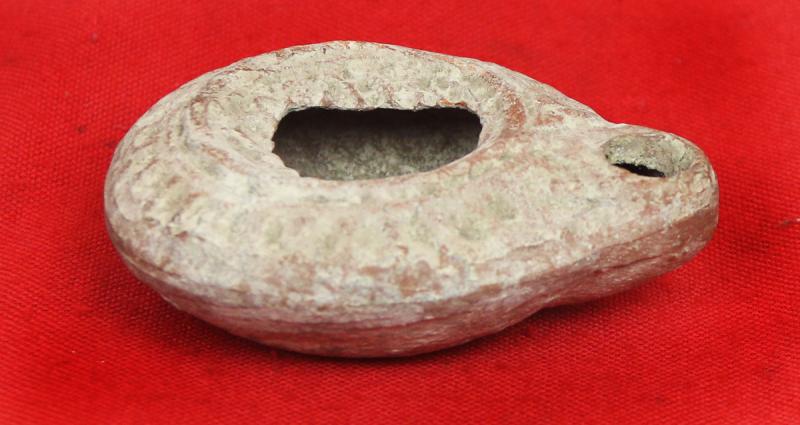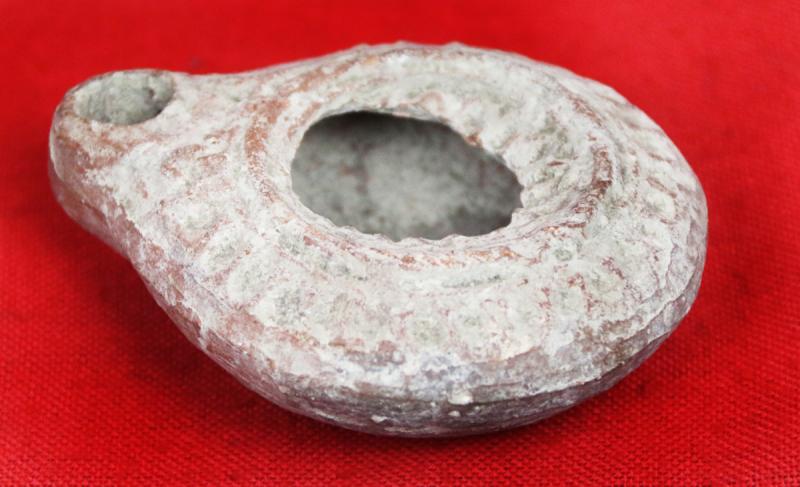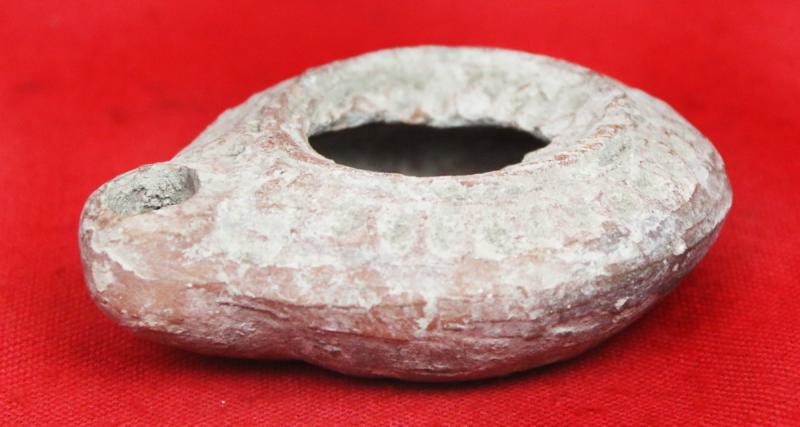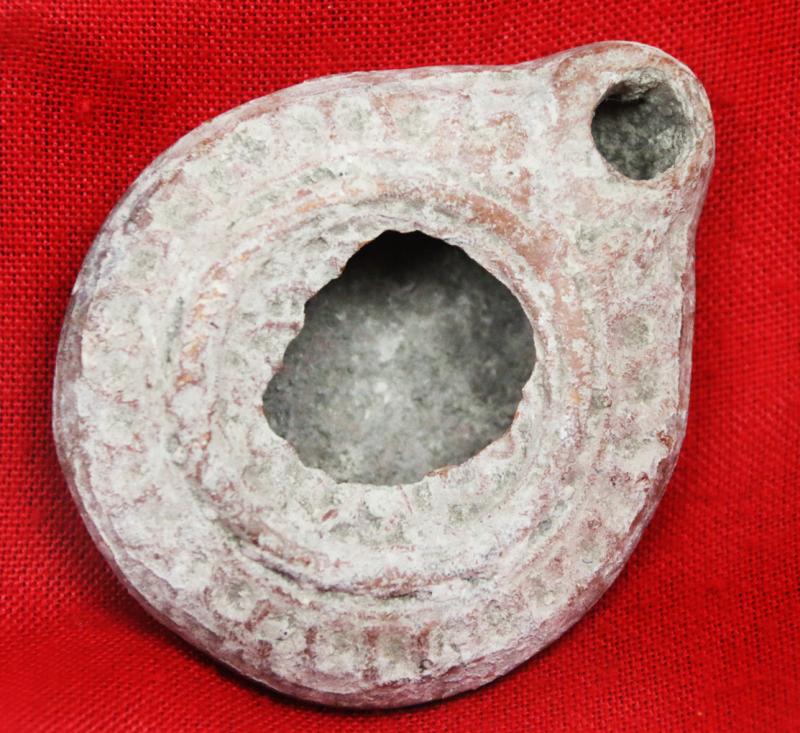Ancient Imperial Roman Discus Form Oil Lamp with Embossed Design Circa 100 AD
Lamps were used throughout antiquity for the principal purpose of lighting in domestic, civic and also religious contexts (funerary or votive) where permanent light was required. The origin of the lamp is not known for certain, but it had become commonplace in Greece by the 4th century BCE, where its use replaced that of the torch known from earlier times. Since the large scale production of olive oil which (amongst other things) was used as lamp fuel and constituted part of a major industry in Ancient Greece it is not surprising that the mass-production of lamps occurred as they were in constant demand. This demand continued well into the Roman period and the subsequent CE era. As the industry continued to grow, so did the varied styles of lamps, that illustrated incredible diversity in their shapes, decorations and materials. Shapes ranged from simple single nozzled ones to others that had 12 or more spouts. Others demonstrated zoomorphic (animal) or anthropomorphic (human) forms, while others had varied decorations confined to the top of the lamp with vegetable or abstract motifs, but also figural scenes (mythological, legendary, gladiatorial, domestic life, erotica etc). Further, while terracotta was the most common material used for the production of these devices, they were also made in stone or metal such as gold or silver, but they were most commonly produced in bronze.
Code: 25119
125.00 GBP





